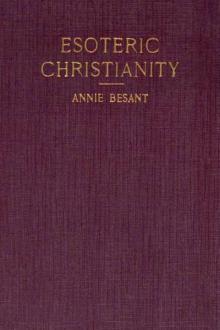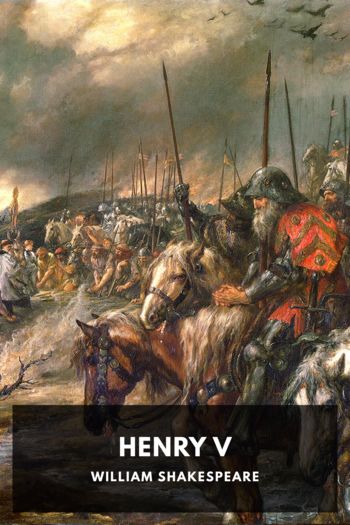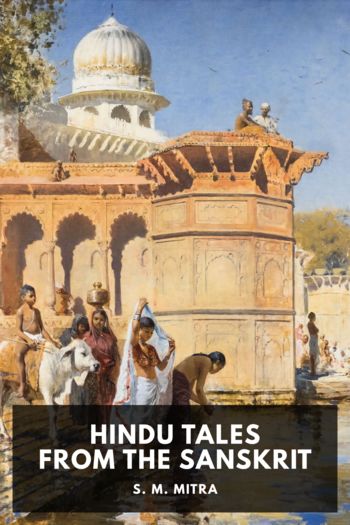Esoteric Christianity by Annie Besant (interesting books to read for teens .txt) 📕

- Author: Annie Besant
- Performer: -
Book online «Esoteric Christianity by Annie Besant (interesting books to read for teens .txt) 📕». Author Annie Besant
The knowledge—or, if the phrase be preferred, the supposition—that the Church possessed these hidden teachings throws a flood of light on the scattered remarks made by S. Paul about himself, and when they are gathered together, we have an outline of the evolution of the Initiate. S. Paul asserts that though he was already among the perfect, the initiated—for he says: "Let us, therefore, as many as be perfect, be thus minded"—he had not yet "attained," was indeed not yet wholly "perfect," for he had not yet won Christ, he had not yet reached the "high calling of God in Christ," "the power of His resurrection, and the fellowship of His sufferings, being made conformable unto His death;" and he was striving, he says, "if by any means I might attain unto the resurrection of the dead."[77] For this was the Initiation that liberated, that made the Initiate the Perfect Master, the Risen Christ, freeing Him finally from the "dead," from the humanity within the circle of generation, from the bonds that fettered the soul to gross matter. Here again we have a number of technical terms, and even the surface reader should realise that the "resurrection of the dead" here spoken of cannot be the ordinary resurrection of the modern Christian, supposed to be inevitable for all men, and therefore obviously not requiring any special struggle on the part of any one to attain to it. In fact the very word "attain" would be out of place in referring to a universal and inevitable human experience. S. Paul could not avoid that resurrection, according to the modern Christian view. What then was the resurrection to attain which he was making such strenuous efforts? Once more the only answer comes from the Mysteries. In them the Initiate approaching the Initiation that liberated from the cycle of rebirth, the circle of generation, was called "the suffering Christ;" he shared the sufferings of the Saviour of the world, was crucified mystically, "made conformable to His death," and then attained the resurrection, the fellowship of the glorified Christ, and, after, that death had over him no power.[78] This was "the prize" towards which the great Apostle was pressing, and he urged "as many as be perfect," not the ordinary believer, thus also to strive. Let them not be content with what they had gained, but still press onwards.
This resemblance of the Initiate to the Christ is, indeed, the very groundwork of the Greater Mysteries, as we shall see more in detail when we study "The Mystical Christ." The Initiate was no longer to look on Christ as outside himself: "Though we have known Christ after the flesh, yet now henceforth know we Him no more."[79]
The ordinary believer had "put on Christ;" "as many of you as have been baptised into Christ have put on Christ."[80] Then they were the "babes in Christ" to whom reference has already been made, and Christ was the Saviour to whom they looked for help, knowing Him "after the flesh." But when they had conquered the lower nature and were no longer "carnal," then they were to enter on a higher path, and were themselves to become Christ. This which he himself had already reached, was the longing of the Apostle for his followers: "My little children, of whom I travail in birth again until Christ be formed in you."[81] Already he was their spiritual father, having "begotten you through the gospel."[82] But now "again" he was as a parent, as their mother to bring them to the second birth. Then the infant Christ, the Holy Child, was born in the soul, "the hidden man of the heart;"[83] the Initiate thus became that "Little Child"; henceforth he was to live out in his own person the life of the Christ, until he became the "perfect man," growing "unto the measure of the stature of the fulness of Christ."[84] Then he, as S. Paul was doing, filled up the sufferings of Christ in his own flesh,[85] and always bore "about in the body the dying of the Lord Jesus,"[86] so that he could truly say: "I am crucified with Christ: nevertheless I live; yet not I, but Christ liveth in me."[87] Thus was the Apostle himself suffering; thus he describes himself. And when the struggle is over, how different is the calm tone of triumph from the strained effort of the earlier years: "I am now ready to be offered, and the time of my departure is at hand. I have fought a good fight, I have finished my course, I have kept the faith; henceforth there is laid up for me a crown of righteousness."[88] This was the crown given to "him that overcometh," of whom it is said by the ascended Christ: "I will make him a pillar in the temple of my God; and he shall go no more out."[89] For after the "Resurrection" the Initiate has become the Perfect Man, the Master, and He goes out no more from the Temple, but from it serves and guides the worlds.
It may be well to point out, ere closing this chapter, that S. Paul himself sanctions the use of the theoretical mystic teaching in explaining the historical events recorded in the Scriptures. The history therein written is not regarded by him as a mere record of facts, which occurred on the physical plane. A true mystic, he saw in the physical events the shadows of the universal truths ever unfolding in higher and inner worlds, and knew that the events selected for preservation in occult writings were such as were typical, the explanation of which would subserve human instruction. Thus he takes the story of Abraham, Sarai, Hagar, Ishmael, and Isaac, and saying, "which things are an allegory," he proceeds to give the mystical interpretation.[90] Referring to the escape of the Israelites from Egypt, he speaks of the Red Sea as a baptism, of the manna and the water as spiritual meat and spiritual drink, of the rock from which the water flowed as Christ.[91] He sees the great mystery of the union of Christ and His Church in the human relation of husband and wife, and speaks of Christians as the flesh and the bones of the body of Christ.[92] The writer of the Epistle to the Hebrews allegorises the whole Jewish system of worship. In the Temple he sees a pattern of the heavenly Temple, in the High Priest he sees Christ, in the sacrifices the offering of the spotless Son; the priests of the Temple are but "the example and shadow of heavenly things," of the heavenly priesthood serving in "the true tabernacle." A most elaborate allegory is thus worked out in chapters iii.-x., and the writer alleges that the Holy Ghost thus signified the deeper meaning; all was "a figure for the time."
In this view of the sacred writings, it is not alleged that the events recorded did not take place, but only that their physical happening was a matter of minor importance. And such explanation is the unveiling of the Lesser Mysteries, the mystic teaching which is permitted to be given to the world. It is not, as many think, a mere play of the imagination, but is the outcome of a true intuition, seeing the patterns in the heavens, and not only the shadows cast by them on the screen of earthly time.
CHAPTER III. THE HIDDEN SIDE OF CHRISTIANITY(concluded). (b) The Testimony of the Church.While it may be that some would be willing to admit the possession by the Apostles and their immediate successors of a deeper knowledge of spiritual things than was current among the masses of the believers around them, few will probably be willing to take the next step, and, leaving that charmed circle, accept as the depository of their sacred learning the Mysteries of the Early Church. Yet we have S. Paul providing for the transmission of the unwritten teaching, himself initiating S. Timothy, and instructing S. Timothy to initiate others in his turn, who should again hand it on to yet others. We thus see the provision of four successive generations of teachers, spoken of in the Scriptures themselves, and these would far more than overlap the writers of the Early Church, who bear witness to the existence of the Mysteries. For among these are pupils of the Apostles themselves, though the most definite statements belong to those removed from the Apostles by one intermediate teacher. Now, as soon as we begin to study the writings of the Early Church, we are met by the facts that there are allusions which are only intelligible by the existence of the Mysteries, and then statements that the Mysteries are existing. This might, of course, have been expected, seeing the point at which the New Testament leaves the matter, but it is satisfactory to find the facts answer to the expectation.
The first witnesses are those called the Apostolic Fathers, the disciples of the Apostles; but very little of their writings, and that disputed, remains. Not being written controversially, the statements are not as categorical as those of the later writers. Their letters are for the encouragement of the believers. Polycarp, Bishop of Smyrna, and fellow-disciple with Ignatius of S. John,[93] expresses a hope that his correspondents are "well versed in the sacred Scriptures and that nothing is hid from you; but to me this privilege is not yet granted"[94]—writing, apparently, before reaching full Initiation. Barnabas speaks of communicating "some portion of what I have myself received,"[95] and after expounding the Law mystically, declares that "we then, rightly understanding His commandments, explain them as the Lord intended."[96] Ignatius, Bishop of Antioch, a disciple of S. John,[97] speaks of himself as "not yet perfect in Jesus Christ. For I now begin to be a disciple, and I speak to you as my fellow-disciples,"[98] and he speaks of them as "initiated into the mysteries of the Gospel with Paul, the holy, the martyred."[99] Again he says: "Might I not write to you things more full of mystery? But I fear to do so, lest I should inflict injury on you who are but babes. Pardon me in this respect, lest, as not being able to receive their weighty import, ye should be strangled by them. For even I, though I am bound [for Christ] and am able to understand heavenly things, the angelic orders, and the different sorts of angels and hosts, the distinction between powers and dominions, and the diversities between thrones and authorities, the mightiness of the æons, and the pre-eminence of the cherubim and seraphim, the sublimity of the Spirit, the kingdom of





Comments (0)